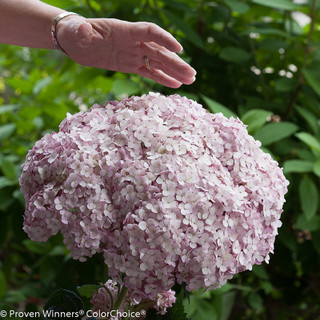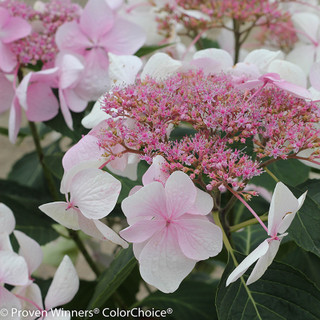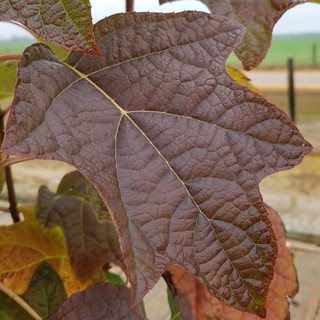Panicle Hydrangeas
Hydrangea paniculata (PeeGee and Family)
Panicle hydrangeas are the perfect hydrangea for anyone who wants a reliable bloom each year. Paniculata hydrangeas will reliably grow and bloom in a wide variety of climates (hardy from USDA growing zones 3 to 7!). The plants also require the least amount of maintenance of any hydrangea type.
The most common reason for hydrangeas not blooming is from frigid winters freezing and killing the flower buds on hydrangeas. With panicle hydrangeas, the flower buds form in the spring on new growth. So the plants are full of flowers each year.
The other main benefit of growing hydrangea paniculata, is how well they do in full sunlight. Most other hydrangeas will burn up in full sun. But panicle hydrangeas thrive in full sunlight. We recommend planting in a location that gets at least 5 hours of direct sunlight. In northern states, the plants can handle full sunlight all day. In southern states, it is best to provide a little shade in the afternoon if possible. It’s the most tolerable of sunlight out of any hydrangea.
Paniculatas often get very large. 8-10 feet tall and wide is not unusual. Some get even taller.
Panicle Hydrangea Varieties
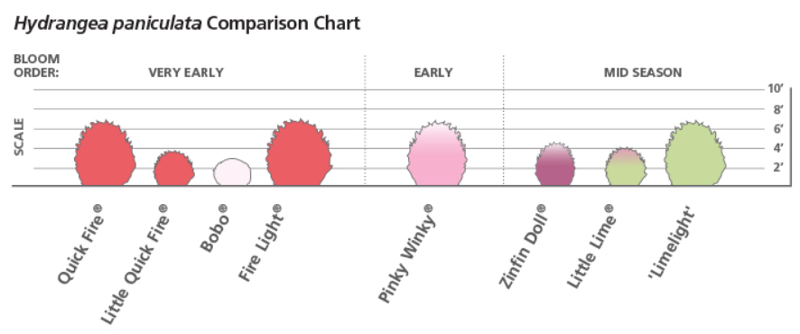
Unlike other hydrangeas, the color of the flowers do not change for panicle hydrangeas based on the pH of the soil. Panicle hydrangeas will bloom white, pink, red or green depending on the variety. The color will change throughout the season based on how much moisture the plant is getting and the night time temperatures. In cooler climates, the flower colors will change more dramatically than in southern states.
If the panicle hydrangeas are skipping pretty pink or white color and going straight to brown, there may be two reasons why. Low water or high nighttime temperatures, over 70 degrees consistently.
A beautiful paniculata, and one of the most popular is 'Limelight' which can be grown in all parts of the United States except those areas which receive no freezing weather.
Popular Small Panicle Hydrangeas
- Bobo - 2 ½-3 feet tall
- Little Lime - 3-5 feet tall
- Little Quickfire - 3-5 feet tall
Popular Large Panicle Hydrangeas
- Limelight - 6-8 feet tall
- Quickfire - 6-8 feet tall
- Pinky Winky - 6-8 feet tall
- Fire Light - 4 ½-6 feet tall
Panicle Hydrangea Care
Unlike other hydrangeas, paniculatas may be grown in full sun if they receive adequate moisture. However, they prefer a little shade during the hottest part of the afternoon in the deep south, especially if conditions are on the dry side.
You can apply slow release fertilizer in the spring and again mid-summer. But do not apply fertilizer after late July as it may prevent the plant from preparing for winter and putting energy towards more growth instead.
Water panicle hydrangeas regularly throughout the year. Make sure the ground is dry between watering, so the plants don’t get root rot. During periods of drought, you may want to water as much as 3-4 times a week if the soil is drying out. We also recommend applying a layer of mulch around the plants each year.
Pruning Panicle Hydrangeas
A desirable trait of all paniculatas is their tolerance for pruning. One can prune them at any time except when they begin forming bloom heads in the summer. The paniculata is the ONLY hydrangea that can be pruned into a tree form. Many paniculatas are sold already pruned to a tree shape and others can be pruned to this shape.
Paniculatas can be pruned (see Method II) at ANY time other than immediately before they are to bloom. Check out our complete hydrangea care guide for more information. The best time to prune panicle hydrangeas is early spring. You can cut back the plants by up to ⅓ of the length of the plant. You can also cut off any dried flowers from the previous year. Trim off any dead or sick branches and leaves at any point throughout the year.
Photos to Identify Your Paniculata (PG) Hydrangea
If you are trying to identify a hydrangea that might be a paniculata, look closely at these pictures.
Note the size of the leaf and the serration (tooth) of the leaf edge. This leaf is smaller, softer, and less shiny than the mophead (macrophylla) leaf.
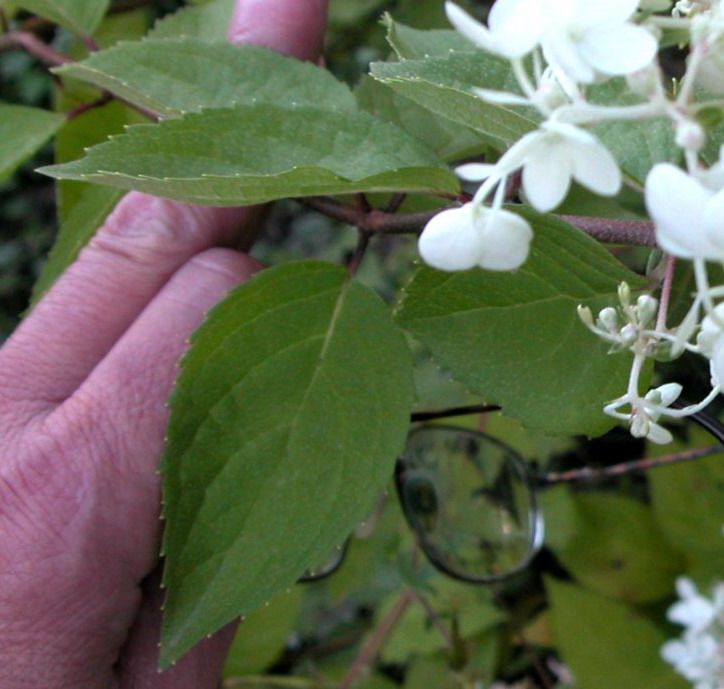
The name "paniculata" comes from the fact that many of the blooms are panicle-shaped (somewhat cone shaped) rather than ball-shaped.

































